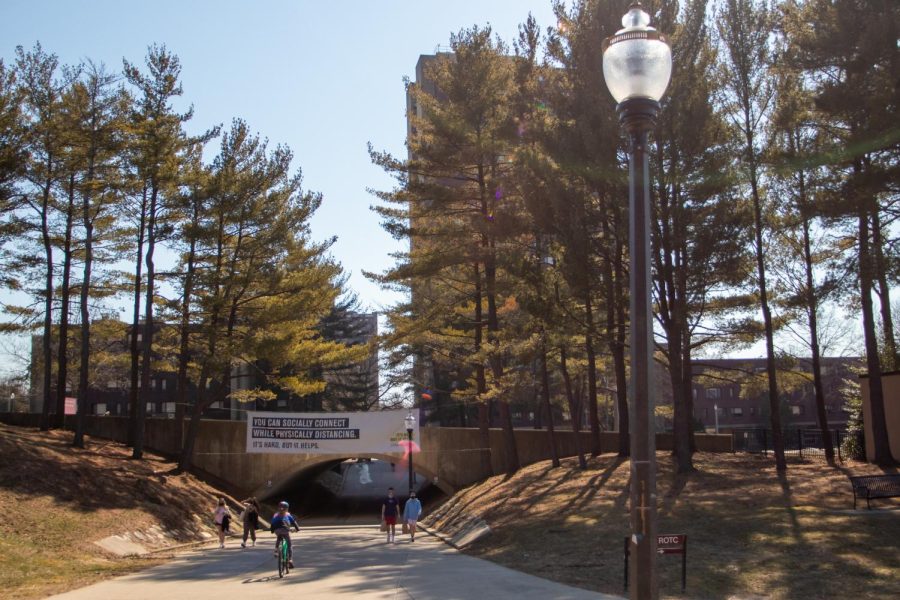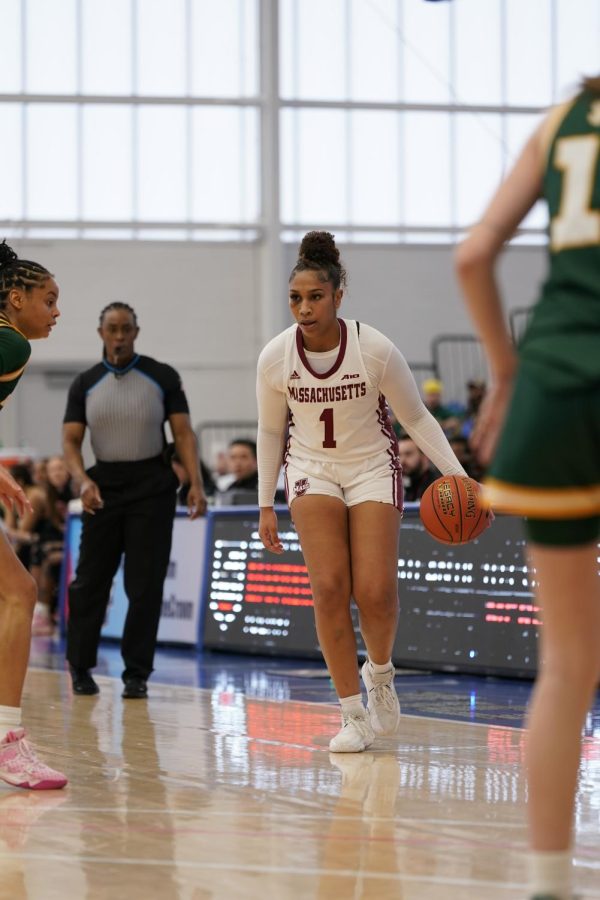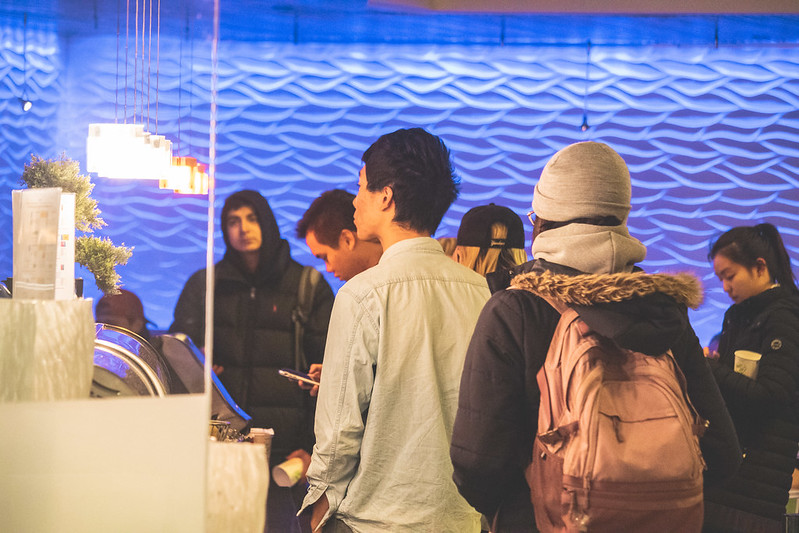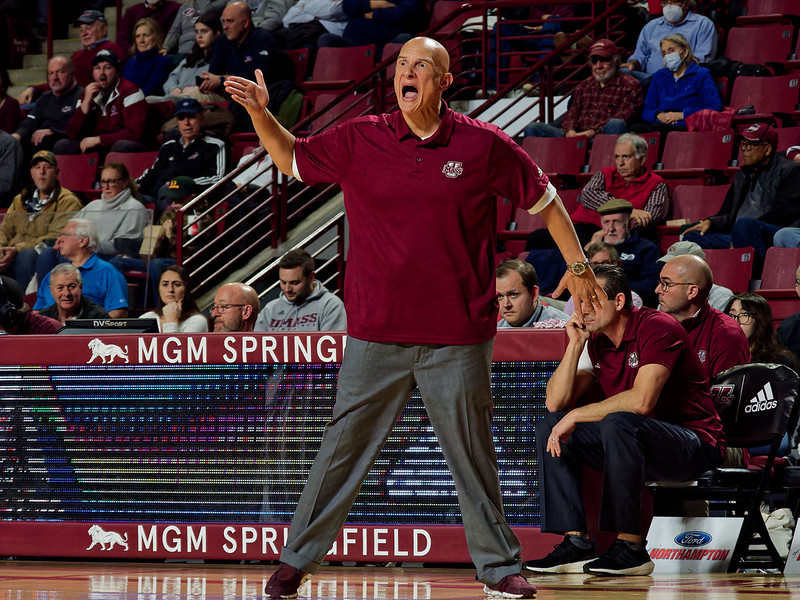Upon entering Blue Wall or any of the University of Massachusetts’ four dining halls, students anticipate spending at least 15 minutes circling the hall to find a seat. They might spend even longer waiting in line to get their food. Study spaces, such as the library or the Student Union, are no different. During busiest times of the weekday, it is nearly impossible to find a seat in the Student Union or the lower level of the W.E.B. Du Bois Library.
Due to the shortage of housing to accommodate approximately 14,000 students living on campus, there has been a significant increase in the amount of expanded housing UMass has had to procure. More students this year have no choice but to settle for economy triples —double rooms occupied by three residents— and quads, which are dorm lounges converted into a living space for four residents. The University has even been forced to house approximately 120 transfer students in the Econo Lodge, a hotel that is a 10-minute drive and a more than 20-minute bus commute from campus.
Many students have expressed discontent with overcrowding on campus and attribute these frustrations to the University’s over admittance of students in the last few years. As the University is in the midst of a new admissions cycle, students are concerned that the University will continue to admit more students than they can withhold.
“I definitely think UMass is accepting more students because they think they can hold that many students, and they think they need more money for whatever they want to do,” said Aidan Houllahan, a sophomore majoring in psychology on the neuroscience track. Houllahan currently lives in a converted quad in Orchard Hill.
Upon further evaluation on the statistics regarding admissions over the last eight admission cycles, the University’s recent reputation of accepting a higher number of students is appropriate.
UMass has consistently seen an increase in its total number of applicants, and the number of students accepted, each year since Fall 2015. According to University Analytics and Institutional Research, there were a total of 43,470 applicants and 25,371 acceptances (58.4 percent acceptance rate) in the 2014-2015 admissions cycle. For the most recent admissions cycle, 2021-2022, there were 48,393 applicants and 30,873 acceptances (63.8 percent acceptance rate) — an increase of nearly six percent.
“All these investments in our teaching and research facilities, in the quality of our faculty and building residence halls. People view UMass as a first-grade public institution in the marketplace of higher ed[ucation], a place of real value based on what they pay to come here,” explained Ed Blaguszewski, a spokesperson for the University. “So that has led to greater demand, a record number of applications.”
The mean admission rate for the last eight fall admission cycles (since Fall 2015) was slightly over 61 percent. Broken down, the mean admission rate from Fall 2015 to Fall 2018 was 58.9 percent, while the mean admission rate from Fall 2019 to Fall 2022 was 63.7 percent. These statistics do not include University Without Walls.
The yield rate —the number of students who decide to enroll in UMass— however, has seen little-to-no variance, settling at an average 22.2 percent yield rate. This, along with increased acceptance rates paired with an increase of applications, has led to increases in total enrollment.
This year’s incoming class recorded 6,611 students, a high number compared to the average of 6,181 enrollment for the incoming class over the last eight cycles. Although larger than expected, it is not a phenomenon the University is entirely unfamiliar with. Blaguszewski points to the incoming class of Fall 2019, in which 6,851 students enrolled at a 23.8 percent yield rate, the highest yield the University has seen.
“Upon reflection, what we believe happened was this was the culmination of a lot of trends that have been happening over many years,” Blaguszewski said. “The investment of our facilities, the investment of our academic programs, the growing recognition that UMass is a great place to go and a very good value for families.”
“Our target goal is currently around 23,000 students,” Blaguszewski continued. “You’ll see the ebb and flow of enrollments in first year classes, but what you need to understand is it’s a four-year overview. And so it’s total enrollment that you’re really, ultimately looking at in terms of how the University manages its housing and what capacity we have.”
University Analytics and Institutional Research, however, demonstrates that total undergraduate enrollment was well above 23,000 in 2018 (23,515 total undergraduate enrollment) and continues to increase, with total enrollment in 2022 being 24,391.
There is no doubt that the admissions process is complex and often unpredictable. In order to determine the number of applicants admission officers would like to accept during an admissions cycle, and anticipate a certain percentage to yield to meet desired enrollment, admissions must first analyze prior trends and evaluate the changing conditions within the industry. It is as much an art as it is a science.
The repercussions of the pandemic have exacerbated this task, with many universities across the country, including UMass, remaining test-optional, along with many students deciding to either defer their acceptances or take time off during the pandemic year.
“It’s always evolving, because society and the marketplace always evolves,” Blaguszewski explained. “And the position of your university, and how it’s understood by students and families as you look at places to go, changes. And the competition changes and the context changes in a pandemic.”
“I can imagine it’s difficult for an admissions office to think of how many students they’ll accept and how many are going to be like, ‘Yeah, I’m going to go here,’” Houllahan concurred. “And that wasn’t easy over the pandemic to estimate, because so many schools had COVID restrictions and weren’t accepting as many students which affected other schools. It was this whole chain process.”
For many students, however, these realities do not mitigate their frustrations with regard to finding housing both on-campus and off-campus and dealing with crowds in campus facilities and classes.
“We didn’t realize how early we had to look [for off-campus housing] because everybody else was doing it too,” said Leah Murphy, a sophomore majoring in psychology. “It was definitely difficult and stressful. People wouldn’t answer or they’d be like, ‘Yeah, somebody got it.’”
Houllahan continued, “It’s an issue that every student is facing. It’s an issue that every student sees when they walk into the dining hall and go to class. Their classes are overcrowded.”
“Why do we need to have so many students when we don’t have the facilities for it?” Houllahan questioned.
Both Houllahan and Murphy agree that the new dorms being built on Massachusetts Avenue will help significantly with overcrowding in the residence halls. The new dorms will provide an extra 600 beds for undergraduates and additional beds for graduate students.
Despite recent construction projects to expand university facilities and attempts at promoting more construction throughout Amherst to house students off-campus, it does not eliminate the conditions Houllahan and other students have experienced throughout the semester.
“I don’t have an issue with the University becoming bigger. But if you want to make it bigger, then you need to build more housing and more dining halls. But they’re not doing that right now, they’re just accepting more students,” Houllahan said.
“We recognize that it’s an evolving marketplace, that there are real challenges for students. There’s real crowding, there was real challenge and inconvenience for students this semester in terms of the Econo Lodge and we’re working on it,” Blaguszewski said. “Given all the circumstances, we’re dedicated to making it better.”
Sabrina Ishanyan can be reached at [email protected] and followed on Twitter @sabrinaishanyan.



















Dr. Ed • Dec 18, 2022 at 5:00 pm
UMass was overcrowded when it only admitted 5000 students a year!
What people don’t realize is that UMass tore down and/or repurposed a lot of student housing — which wasn’t really ever replaced.
There were the University Apartments across from the Baptist Church, and everything from that traffic light to Triangle Street was frat houses. The university bought the ones on the east side of North Pleasant Street and tore them down, and most of the ones on the other side of the street were repurposed into offices. Lincoln Apartments had 105 units, North Village 240 and those are only being replaced.
There were supposed to be SIX North Apartment buildings but UMass miscalculated the cost of steel and could only afford to build three. And it did build the Com College dorms — but all of that was only to provide housing to meet the needs of 5000 admitted students per year!
The problem is that UMASS DOESN’T CARE ABOUT STUDENTS — it considers students a fungible resource and nothing more.
AJ Morris • Dec 13, 2022 at 1:34 pm
All the new building is not too support future numbers – it’s too catch up to provide needed facilities for past & present numbers. As an alum ’81 who still lives in the area, my spouse is a 30+year employee, & one of our children attended UMass, I can reasonably say that the current building is only making up for past deficit in appropriate and up to date facilities & not to provide for current & increasing inumber of students.